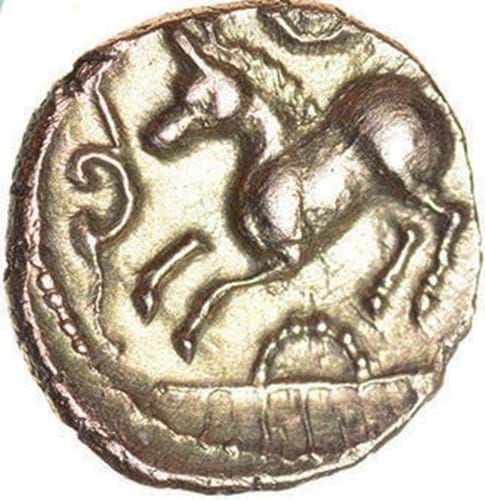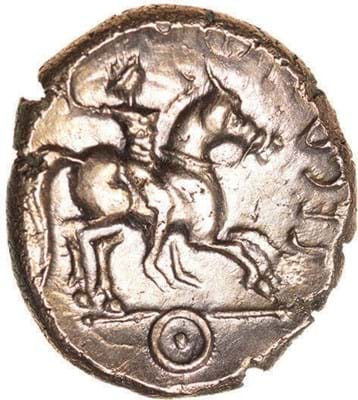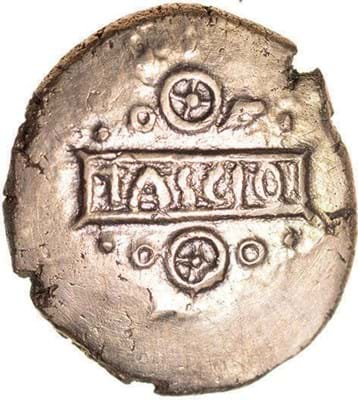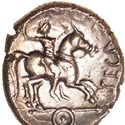Demonstrating sophisticated metallurgical knowledge, they were cast as blanks and then struck using expertly crafted dies. Just occasionally they include the name of a tribal ruler from that ‘lost’ era of British history before the Roman conquest.
Tasciovanus, king of the Catuvellauni c.20BC-c.9AD, is known only through numismatic evidence. He appears to have ruled for three decades from a power base at Verlamion (an Iron Age settlement on the river Ver that became the Roman city of Verulamium and modern-day St Albans) and, for a briefer period, much further west in Camulodunum (Colchester).
Some of Tasciovanus’ earlier coins bear the legend Ricon (Common Brittonic for ‘legitimate king’) while later issues from the decades either side of 1AD carry abbreviated names such as Andoco, Sego, Dias and Rues – suggesting that a number of still enigmatic regional subordinates answered to him.
These are elusive coins that, even in the era of the Portable Antiquities Scheme, are recorded in single figures. However, John Follows, owner of one of the finest and best documented collections of British Celtic coins formed in recent years, had two of them. Both were dispersed by specialist dealer-auctioneer Chris Rudd in Aylsham, Norfolk – land of the Iceni – during the second part of the Follows collection online sale, which closed on May 17.
The Sego-Tascio ‘warrior’ stater – a type first recorded by the antiquarian William Boys in 1792 – was probably struck in Kent in the name of Tasciovanus c.5-15AD. The name Tascio appear on one side flanked by two four-spoked chariot wheels, Sego and a warrior on horseback to the other.
The 5.4g example in the Follows collection, found by a metal detector in Wrotham, Kent, in October 2015, was one of just eight known and perhaps the best of the three in private hands. A clear strike with a precise find spot and date, it was deemed a better specimen than that sold by Rudd in 2004 for £3500 and later resold by Dix Noonan Webb in 2010 for £3200.
Estimated at £7500, the closing bid was £15,500 (plus 20% buyer’s premium).
Gold quarter staters, weighing on average between 1-2g, are comparatively scarce as a denomination, suggesting that fewer were minted. This second tranche of the Follows collection included a Sego-Tascio issue that is again one of just eight known.

Sego Tascio quarter stater c.5-15AD, actual size 12mm – £3400 at Chris Rudd.
The name tablet and chariot wheels connect it directly to Sego’s full stater. Found in Faversham in September 2017, it is one of more than 10,000 Celtic gold coins recently published in Dr John Sill’s monumental study, Divided Kingdoms: The Iron Age Gold Coinage of Southern England.
This time the hammer price was a fraction below estimate at £3400.
Also see Bid Barometer


















